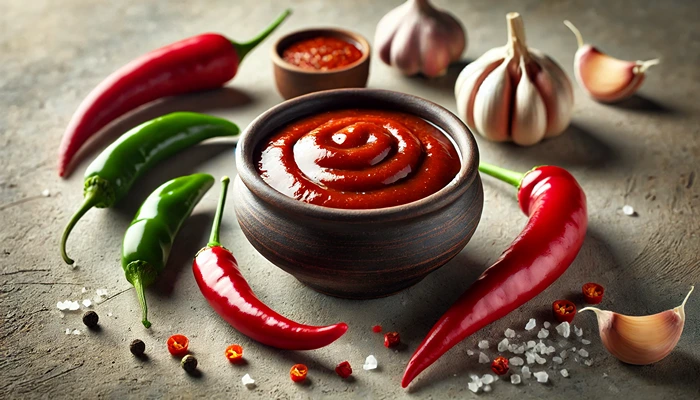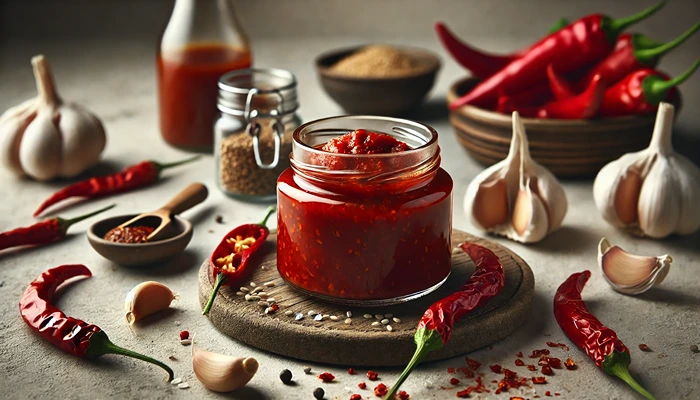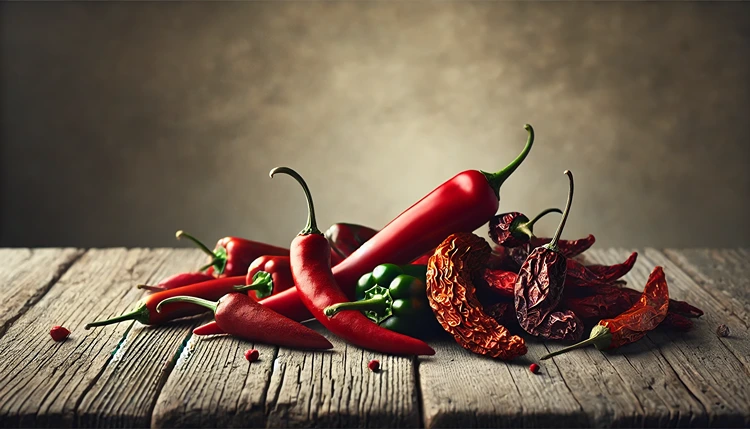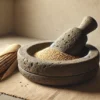Chili peppers are a cornerstone of traditional Aztec dishes, bringing heat, flavor, and a deep connection to their culture. They weren’t just about spicing up food; chili peppers held spiritual and medicinal significance in Aztec society. Today, many of the recipes we enjoy in Mexican cuisine owe their bold, fiery flavors to these ancient peppers. Whether you’re craving a hearty dish or curious about the origins of these flavors, understanding chili peppers in Aztec cuisine is a journey into the heart of Mesoamerican cooking.
Why Were Chili Peppers So Important in Aztec Dishes?
The Aztecs were resourceful with their ingredients, and chili peppers played a significant role in both everyday meals and ceremonial feasts. These spicy fruits weren’t just used for their flavor. They were valued for their nutritional benefits and believed to have healing properties.
Chili peppers were a daily staple in the Aztec diet, mixed into everything from simple stews to elaborate sauces. Different varieties were used depending on the dish and occasion, showcasing the versatility of these peppers. From smoky to fiery hot, the Aztecs had a pepper for every need.
Chili Varieties in Aztec Cuisine
The Aztecs had access to a variety of chili peppers, each offering distinct flavors. Some of the most common ones include:
- Ancho: Known for its deep, sweet, and smoky flavor, this dried version of the poblano chili was often used in sauces and moles.
- Chipotle: A smoke-dried jalapeño, it brought a smoky heat to dishes and was often used to preserve food.
- Chilaca: This long, dark chili was commonly used in stews and sauces, providing a mild to medium heat.
- Piquín: Tiny but mighty, these small peppers packed a punch and were often used in salsas or sprinkled over food for extra heat.
Helpful Hint:
If you’re looking to recreate Aztec-inspired dishes today, consider mixing different chili varieties. Ancho for a rich base, chipotle for a smoky finish, and piquín for that extra kick. The combination of flavors can help you build depth and complexity in your recipes.
How Chili Peppers Enhanced Aztec Flavors
Chili peppers didn’t just add heat; they elevated the entire culinary experience. The Aztecs understood how to balance flavors by combining chilies with other traditional ingredients like maize, beans, tomatoes, and herbs. This blend of flavors resulted in dishes that were as complex as they were delicious.
Balancing Heat with Other Ingredients
In traditional Aztec cuisine, balancing the heat of chili peppers with other ingredients was key. The rich earthiness of maize, the creaminess of beans, and the tanginess of tomatoes helped to mellow the intensity of the peppers while still allowing their vibrant flavors to shine.
Maize, the staple grain of the Aztecs, was often paired with chili in various forms, such as tamales or tlaxcalli (what we now know as tortillas). These dishes became a canvas for chili-based sauces and salsas, creating a harmonious blend of textures and flavors.
Chili Peppers in Aztec Rituals and Ceremonies
Chili peppers weren’t just for cooking. They also played a significant role in Aztec rituals and ceremonies. The intense heat of the peppers was believed to purify the soul, and they were often used in offerings to the gods. The fiery sensation of consuming chili peppers was thought to connect the people with their deities, symbolizing both pain and endurance.
In ceremonial feasts, chili peppers were used in elaborate dishes that were offered to the gods, reinforcing the spiritual importance of food in Aztec culture. The strong flavors of chili were believed to represent strength, both physically and spiritually.
Chili and Medicine in Aztec Society
Beyond their spiritual significance, chili peppers were also used for their medicinal properties. The Aztecs believed that chilies could cure a variety of ailments, from headaches to respiratory problems. Capsaicin, the active compound that gives chilies their heat, was thought to relieve pain and inflammation.
Chili peppers were often included in tonics or applied directly to the skin to treat sore muscles. Their use in medicinal practices demonstrates how deeply integrated these peppers were in every aspect of Aztec life, from food to healing.
Chili-Based Aztec Dishes: A Taste of History
Many traditional Aztec dishes featured chili peppers as the star ingredient. These recipes have been passed down through generations, preserving the flavors and techniques of Mesoamerican cuisine.
Famous Aztec Dishes with Chili
- Mole: Perhaps one of the most iconic dishes, mole is a rich, complex sauce made with chilies, chocolate, and a blend of spices. The dish is still popular in Mexican cuisine today.
- Tlacoyo: A stuffed masa cake, often filled with beans or meat, and topped with salsa made from chili peppers.
- Chilmolli: A thick chili-based stew that was commonly enjoyed by the Aztecs, combining chilies with meat or vegetables for a hearty meal.
Cooking with Chili Peppers Today
If you’re inspired to cook with chili peppers like the Aztecs did, it’s easier than ever to incorporate these ancient flavors into your modern kitchen. Many traditional chili varieties are available at local markets or online, allowing you to experiment with the flavors that have been enjoyed for centuries.
Aztec-Inspired Chili Sauce

Ingredients
- 2 dried ancho chilies
- 1 dried chipotle chili
- 2 cloves garlic
- 1/4 cup roasted tomatoes
- 1/2 tsp cumin
- 1 tsp sea salt
- 2 tbsp olive oil
Instructions
- Soak the dried chilies in warm water for 10 minutes until soft.
- Remove the seeds and stems, and blend the chilies with garlic, roasted tomatoes, cumin, and salt until smooth.
- Heat olive oil in a pan, add the chili mixture, and cook for 5 minutes, stirring occasionally.
- Serve as a sauce for grilled vegetables, tacos, or tamales.
Notes
This sauce can be stored in the fridge for up to a week. Feel free to adjust the heat by adding more or fewer chilies, depending on your spice preference.
How the Aztecs Preserved Chili Peppers
Chili peppers were a valuable resource in Aztec society, and preserving them was essential for maintaining a year-round supply. The Aztecs used a variety of methods to ensure their chili peppers lasted long beyond the harvest season. By drying, smoking, and storing chilies, they could be used in sauces, stews, and even medicinal remedies throughout the year.
Drying and Smoking Chili Peppers
Drying chili peppers was one of the most common preservation methods used by the Aztecs. After being harvested, the peppers were laid out in the sun to dry naturally. This process not only preserved the chilies but also concentrated their flavors, making them even more potent.
Another method was smoking, which was particularly important for varieties like chipotle. By smoking the peppers over a wood fire, the Aztecs could extend their shelf life while imparting a rich, smoky flavor. This method also added another layer of complexity to their dishes, as the smokiness paired beautifully with other ingredients like cacao and maize.
Storing Chili Peppers
Once the peppers were dried or smoked, they were stored in clay pots or woven baskets. These containers helped keep the chilies dry and protected them from moisture, which could cause mold. The Aztecs were meticulous about their storage practices, ensuring that their chili peppers remained in top condition for cooking and medicinal use.
Chili Pepper Preservation Techniques in Aztec Cuisine
| Method | Description | Effect on Flavor |
|---|---|---|
| Sun Drying | Chilies were laid out in the sun to dry naturally, preserving them for later use. | Intensifies the heat and flavor, making the peppers spicier and more concentrated. |
| Smoking | Chilies were smoked over a wood fire, particularly varieties like chipotle. | Imparts a rich, smoky flavor to the chilies, adding depth to dishes. |
| Storage in Clay Pots | After drying or smoking, chilies were stored in clay pots to protect them from moisture. | Preserves the chilies’ flavor and texture over long periods. |
Chili Peppers and the Balance of Flavors in Aztec Dishes
While chili peppers brought the heat, the Aztecs were masters at balancing strong flavors with more neutral ingredients. They understood how to complement the spiciness of chilies with earthy or sweet elements, creating dishes that were both bold and balanced.
Combining Chili Peppers with Cacao
One of the most famous combinations in Aztec cuisine was chili peppers with cacao. The rich, slightly bitter taste of cacao mellowed the heat of the chilies while enhancing their depth of flavor. This pairing was often used in sauces, especially in the creation of mole, a dish that remains a staple in Mexican cuisine today.
Cacao wasn’t just for desserts; the Aztecs used it in savory dishes, blending it with chili peppers, tomatoes, and herbs to create sauces that were poured over meats or used to flavor tamales. This combination of spicy and earthy flavors was a signature of their cooking style.
Chilies and Corn: A Perfect Pair
Corn, or maize, was the foundation of the Aztec diet, and it was frequently paired with chili peppers to add depth and complexity to dishes. Corn tortillas, tamales, and tlacoyos were often topped with chili-based sauces or stuffed with chili-spiced fillings. The sweet, slightly nutty flavor of maize provided the perfect counterbalance to the heat of the chilies.
How to Incorporate Traditional Aztec Chili Pepper Techniques in Modern Cooking
Cooking with chili peppers like the Aztecs isn’t as complicated as it sounds. With just a few simple techniques, you can bring the rich flavors of Mesoamerican cuisine into your kitchen. Whether you’re making a traditional mole or a simple chili sauce, understanding how to use chilies effectively will elevate your cooking.
Roasting and Grinding Chilies
One of the simplest ways to prepare chili peppers is to roast them. Roasting helps to release the oils in the peppers, intensifying their flavor and adding a smoky depth. The Aztecs would often roast their chilies on an open flame, but you can achieve the same effect by roasting them in an oven or on a grill.
Once roasted, the chilies can be ground into a paste or powder. This was a common technique in Aztec cuisine, as it allowed them to use the chilies as a base for sauces, salsas, and stews. Grinding chilies by hand in a mortar and pestle releases more of their natural oils, resulting in a richer, more flavorful paste.
Making Your Own Chili Paste
If you’re feeling adventurous, try making your own chili paste at home. This simple recipe uses dried chilies, garlic, and a few spices to create a versatile paste that can be added to soups, stews, or even spread on tortillas for an extra kick.
Homemade Chili Paste

Ingredients
- 5 dried ancho chilies
- 2 dried guajillo chilies
- 3 cloves garlic
- 1 tsp cumin
- 1 tsp sea salt
- 1 tbsp olive oil
Instructions
- Soak the dried chilies in warm water for 10 minutes until softened.
- Remove the seeds and stems, and blend the chilies with garlic, cumin, and salt until smooth.
- Heat olive oil in a pan, add the chili mixture, and cook for 5-7 minutes until fragrant.
- Store in an airtight container in the fridge for up to two weeks.
Notes
This chili paste can be used as a base for many dishes, from soups to marinades. Adjust the spice level by using different chili varieties.
FAQs
Wrapping Up
Chili peppers were more than just an ingredient in traditional Aztec dishes; they were a symbol of flavor, strength, and even spirituality. From their essential role in everyday meals to their place in religious ceremonies, chili peppers have shaped the foundation of Mexican cuisine. Today, their legacy continues, enriching dishes with bold, complex flavors and offering a glimpse into the rich cultural history of the Aztecs.
As you explore the role of chili peppers in Aztec cuisine, you’ll discover a wide range of flavors and techniques that are still used in Mexican cooking today. Whether you’re trying your hand at a homemade mole or simply adding a little extra heat to your favorite dish, incorporating these traditional peppers into your kitchen can transform the way you cook. Don’t be afraid to experiment with the different varieties of chilies and see how they enhance your culinary creations.








